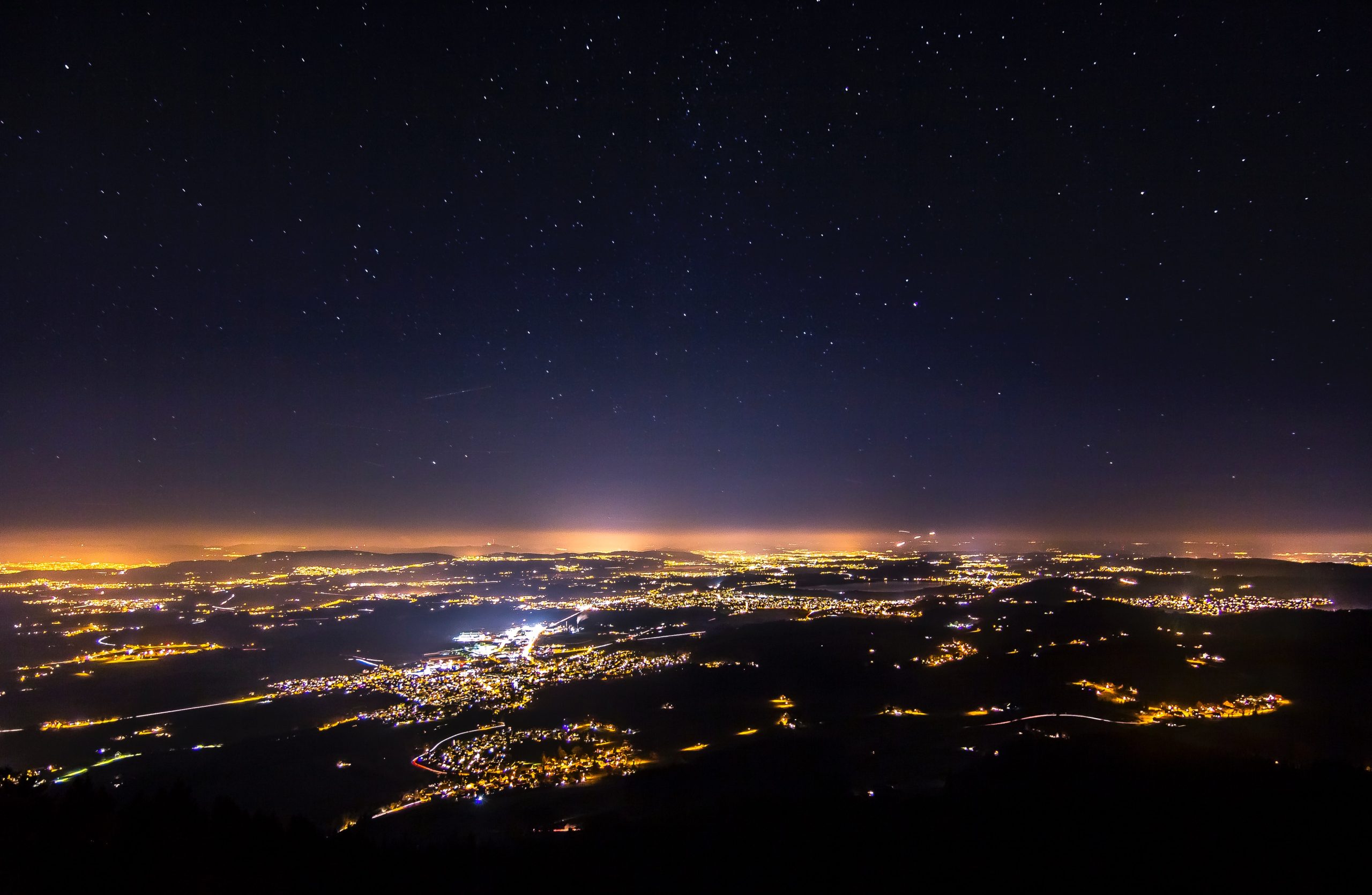Photopollution (also known as luminous pollution) refers to the excessive, misdirected and invasive use of outdoor lighting. Nighttime sky colour and contrast are altered by lighting that is not properly controlled and disrupts the circadian clock (the 24-hour procedures that occur in most organisms) of the environment, as well as the health and well-being of humans and the astronomical community. As the need for artificial light rises year after year, so does the danger of light pollution.
Photographic pollution has existed for some time. Supply for street lamps increased as countries became more affluent and urbanised over the past 50 years, which resulted in an expansion of pollution from cities to the suburbs, as well as to rural areas. In metropolises, New York, and Washington, D.C., this type of pollution is becoming increasingly common. According to National Geographic, Chicago was named the United States’ that many light-polluted city in 2008.
Despite this, Hong Kong in China is the most light-polluted location on the planet. Hong Kong was named the world’s most light-polluted city by the University in March 2013. Tsim Sha Tsui, a Hong Kong neighbourhood in southern Kowloon, was found to have a night sky 1,200 times brighter than the average city sky in a university study. Massive amounts of light pollution are being generated all over the world. For example, according to an article published in the Ecology and Society Journal in 2010, the use of artificial lighting is increasing at a rate of 20% per year, depending on the region, and this needs to be addressed urgently.
In Order To Avoid Light Pollution
In contrast to other forms of pollution and waste, luminous pollution can be contained or reduced by enhancing outdoor lighting practises. Be aware that outdoor lighting has a purpose: to provide visibility & safety at night. Lighting that deviates from this purpose, however, may become offensive to those around you very quickly. Light pollution can be reduced without sacrificing your safety or comfort.
Make use of CFLs & LED bulbs that generate warm white light. Eye fatigue, impaired night vision, and light pollution are all caused by the short-wavelength blue light that many LED lights emit. Visit Here to know about Landfills.

You can reduce sky pollution by using outdoor light fittings that have solid caps on top of the light bulbs, so make sure to look for fixtures that do this. Shades can be purchased and installed at a reasonable cost to protect existing fixtures.
Avoid light escaping well above horizontal plane (nadir) by selecting exterior light fixtures to cutoff angles that minimise uplighting and reduce high-angle illumination. In many cases, cutoff lighting improves visibility by illuminating the ground below.
Install timers or motion detectors on outdoor lighting fixtures to turn them on and off as needed. Check and adjust the sensitivity of the motion detector to ensure that the lights don’t turn on and off erratically.
In order to reduce glare and light spill, use IDA-certified Dark Sky Lighting. These light fixtures can be found in a wide variety of styles, such as flush-mounted, pendant, and wall lights. Certified Turtle Safe Illumination should be used by anyone who lives near the beach. They should be mounted minimal to avoid the high brightness from the long wavelength light produced by these shielded light fixtures.
Avoid wasting energy by turning off all exterior lights when you get home or before you go to bed at night. You can always turn them off at 11 p.m. if you’re in any doubt. Remember to turn off any indoor lights, such as wall lights, because once you leave the house or go to sleep to save energy.
Prevent or reduce light pollution throughout your place of residence, your place of employment, and your local community. Prevent stray light by closing the blinds and curtains. To avoid wasting light and energy, have the management turn off dim the office lights when everyone has left the building for the day. To avoid glare and light clutter, ask local businesses to dim their after-hours signs. Request that your state and local legislatures pass light pollution reduction ordinances.

